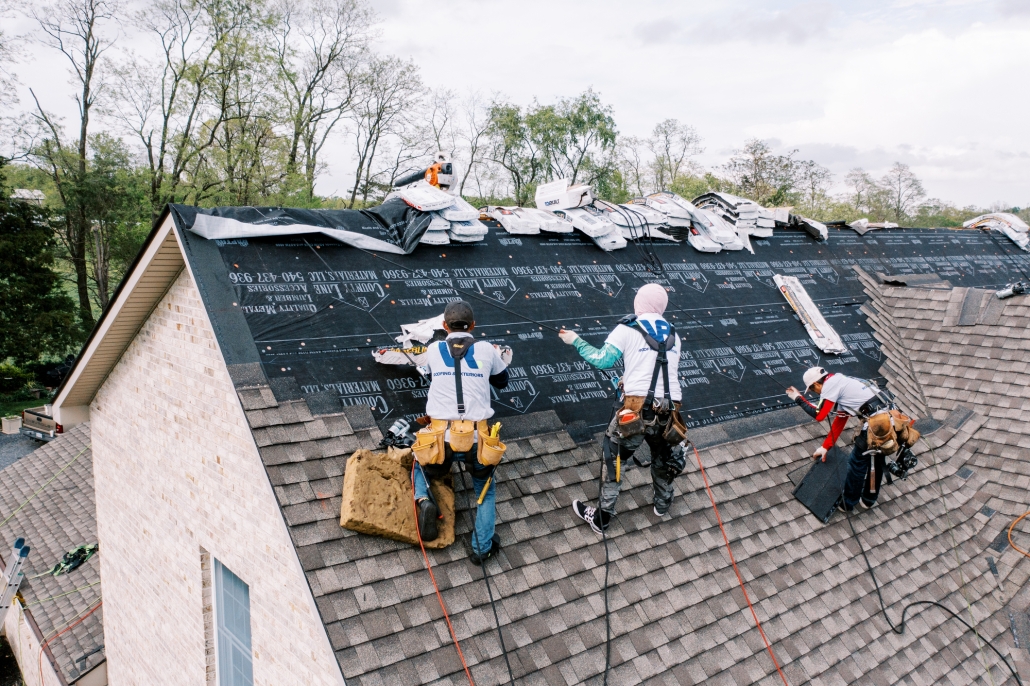Comparing Prices Among Roofing Companies in Gainesville Florida
Best Practices for Ensuring Proper Roof Covering Ventilation
A well balanced consumption and exhaust vent proportion, generally 1:300, plays a crucial role, with intake vents preferably positioned at the reduced edge of the roof covering for cool air entry and exhaust vents at the optimal for warm air departure. Keeping insulation away from vents is critical to avoid airflow constraint.
Understand Air Flow Basics
Properly comprehending ventilation basics is important for guaranteeing the long life and efficiency of roofing systems. Effective ventilation alleviates dampness build-up and temperature extremes in the attic room, both of which can cause considerable structural damages over time. A well-ventilated roofing system helps in preventing typical issues such as mold growth, wood rot, and ice dams, which can compromise the honesty of the roof covering products and the underlying frameworks.
The primary objective of ventilation is to help with the motion of air, enabling a regular exchange in between the indoor and outside atmospheres. This equilibrium is attained with a combination of consumption and exhaust vents that function together to maintain optimal air movement. Intake vents, typically situated along the soffits or eaves, enable fresh air to go into the attic space, while exhaust vents, often situated at or near the roof covering ridge, allow hot, damp air to leave.
Key elements affecting the performance of roof ventilation include appropriate placement, appropriate sizing, and ensuring that both consumption and exhaust vents are unobstructed. Normal evaluation and maintenance are essential to recognize prospective obstructions, damages, or ineffectiveness in the air flow system, therefore guarding the roofing's efficiency and longevity.
Kinds Of Roof Covering Vents
Roofing system vents play a crucial function in maintaining efficient attic room air flow and, by extension, the total health and wellness of the roofing system. Numerous types of roof vents are offered, each with distinct benefits customized to certain roofing demands.

Soffit vents are mounted under the eaves and work in tandem with roof vents to make certain a balanced intake and exhaust system. By allowing cooler air to go into from below, soffit vents facilitate the expulsion of hot air via top vents. Gable vents, located on the outside walls of the attic, offer an additional reliable remedy, particularly in homes with saddleback roofs.
Examine Your Present Ventilation

Following, consider the age and problem of your roof materials and ventilation elements. Older systems might not adhere to existing building codes or may have weakened gradually, decreasing their efficiency. Conduct an extensive evaluation to identify more tips here any kind of signs of damage, such as corrosion, damage, or voids that could compromise the system's performance.
Additionally, gauge the attic room temperature level and humidity levels. High temperatures and moisture can suggest inadequate ventilation.
Installation Best Practices
Effective setup of roof air flow systems is extremely important for making sure optimal efficiency and durability. Correct installment starts with comprehending the details ventilation demands of the roof covering and the building it covers. This involves calculating the correct ratio of intake to tire vents, generally adhering to the 1:300 guideline, which states one square foot of ventilation for every 300 square feet of attic room flooring room.

The positioning of vents is similarly important. Intake vents need to be mounted at the roofing system's lower side, often in the soffits, to enable awesome air to enter. Exhaust vents, on the various other hand, should be installed near or at the roof covering's height to facilitate the leave of warm, wet air. This produces a natural airflow that helps preserve temperature and wetness balance within the attic room area.
Seal all air vent connections thoroughly to protect against air leaks and possible water seepage. Usage top notch products and adhere to maker guidelines to make certain longevity and effectiveness. In addition, integrating ridge vents with baffles can significantly enhance air flow effectiveness by stopping wind-driven rain and snow from going into the attic room.
Eventually, specific setup of roof ventilation systems minimizes prospective concerns such as mold development, ice dams, and structural damage, ensuring the roof's integrity and the building's overall health.
Normal Upkeep Tips
Uniformity in maintenance practices is essential to making certain the long-lasting performance of roof ventilation systems. Throughout these examinations, guarantee that vents are complimentary of debris, nests, and various other blockages that can restrain air flow.
Use a soft brush or a vacuum to get rid of dust and debris from consumption and exhaust vents. Be cautious not to harm the air vent screens or louvers during the procedure.
Appropriate insulation is equally essential. Guarantee that attic insulation does not block the vents, as this can severely restrict air flow. Reposition or replace it to keep an efficient barrier. if any insulation has shifted or settled.
Lastly, change any type of harmed or missing components promptly. Busted vents, broken roof shingles, or deteriorated blinking can all add to insufficient air flow and needs to be dealt with immediately. Normal maintenance guarantees that the roofing air flow system functions ideally, thereby prolonging the life-span of the roofing itself.
Conclusion
Ensuring correct roof covering air flow is paramount for preserving the effectiveness and longevity of a roof. Adherence to the 1:300 consumption and exhaust vent proportion, paired with the tactical positioning of vents, is crucial. Routine semiannual assessments, particles cleaning, and ensuring insulation does not obstruct air flow are check that vital techniques. Executing these ideal practices will foster a well-ventilated roof, thus alleviating potential issues associated to moisture build-up and too much heat, inevitably lengthening the roof's life-span.
A balanced consumption and exhaust air vent proportion, generally 1:300, plays an essential duty, with intake vents ideally positioned at the reduced edge of the roof for great air entrance and exhaust This Site vents at the peak for warm air departure. Intake vents, generally situated along the eaves or soffits, allow fresh air to go into the attic room space, while exhaust vents, frequently positioned at or near the roofing ridge, allow hot, humid air to get away.
Soffit vents are set up under the eaves and job in tandem with roofing system vents to ensure a well balanced consumption and exhaust system. By enabling cooler air to get in from below, soffit vents promote the expulsion of hot air via upper vents. Adherence to the 1:300 intake and exhaust air vent ratio, combined with the critical placement of vents, is crucial.